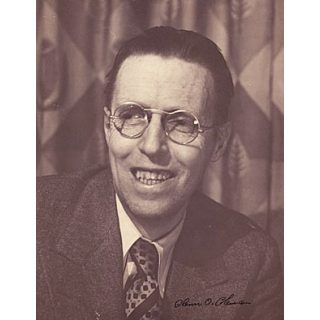
Springfield, Ohio United States – 1887 -1932
In styles that range from straightforwardly realist to the fanciful and abstracting, Glenn O. Coleman devoted his paintings and prints to the portrayal of his adopted hometown of New York City.
In styles that range from straightforwardly realist to the fanciful and abstracting, Glenn O. Coleman devoted his paintings and prints to the portrayal of his adopted hometown of New York City. A native Midwesterner, Coleman began his art studies as a youth at the Industrial Art School in Indianapolis and also worked as an apprentice newspaper artist. In 1905, he went to New York City for further training. Coleman enrolled at the New York School of Art just as the charismatic and influential realist artist Robert Henri joined the faculty; he also worked underEverett Shinn, one of several progressive artists in Henri’s circle who had begun to exhibit together as The Eight and were later dubbed the Ashcan school in reference to critics’ derisive response to the gritty urban realism of their art. Coleman soon followed their example, finding abundant subjects in some of the city’s more colorful neighborhoods, such as Greenwich Village and the Lower East Side. He gained first-hand acquaintance with the experience of the urban poor: often penniless, he frequently was forced to forgo painting in order to work menial jobs to support himself.
Like John Sloan, another member of the Ashcan group, Coleman was drawn to the political ideas of socialism and its championing of the working classes. In the 1910s he contributed drawings to the socialist graphic journal The Masses. Active in progressive artists’ circles, he contributed work to the ground-breaking exhibition of international modernist art known as the Armory Show, in 1913, and he was one of the earliest members of the Society of Independent Artists, a forum for exhibiting avant-garde art founded in 1916. Coleman also exhibited at several important annual exhibitions at such mainstream institutions as the Pennsylvania Academy of the Fine Arts and the Art Institute of Chicago, and he won several prizes.
In the mid-1920s, Coleman’s focus as a painter shifted away from the social environment of the city toward a preoccupation with such formal concerns as the geometry of its massive new architecture. Just as his paintings assumed a more modernist style, however, he returned to his earliest sketches of the city as a basis for a series of more conventionally realistic lithographs that celebrate street life and the city’s ordinary inhabitants. Near the end of his life, the artist moved to rural Long Island and began to paint landscapes. Today, Coleman is remembered as one of many artists inspired by the ideals of the Ashcan school to embrace the vibrancy of modern urban life through their art.
Coleman was a member of the Society of Independent Artists, the New Society of Artists and the Whitney Studio Club. His prints include “Hurdy Gurdy Ballet”, among others.
GLENN O. COLEMAN
Sorry, we couldn't find any posts. Please try a different search.